Ashtanga Vinyasa Yoga for intense practice of push-ups and extensions [Eng - Esp]
14
About :
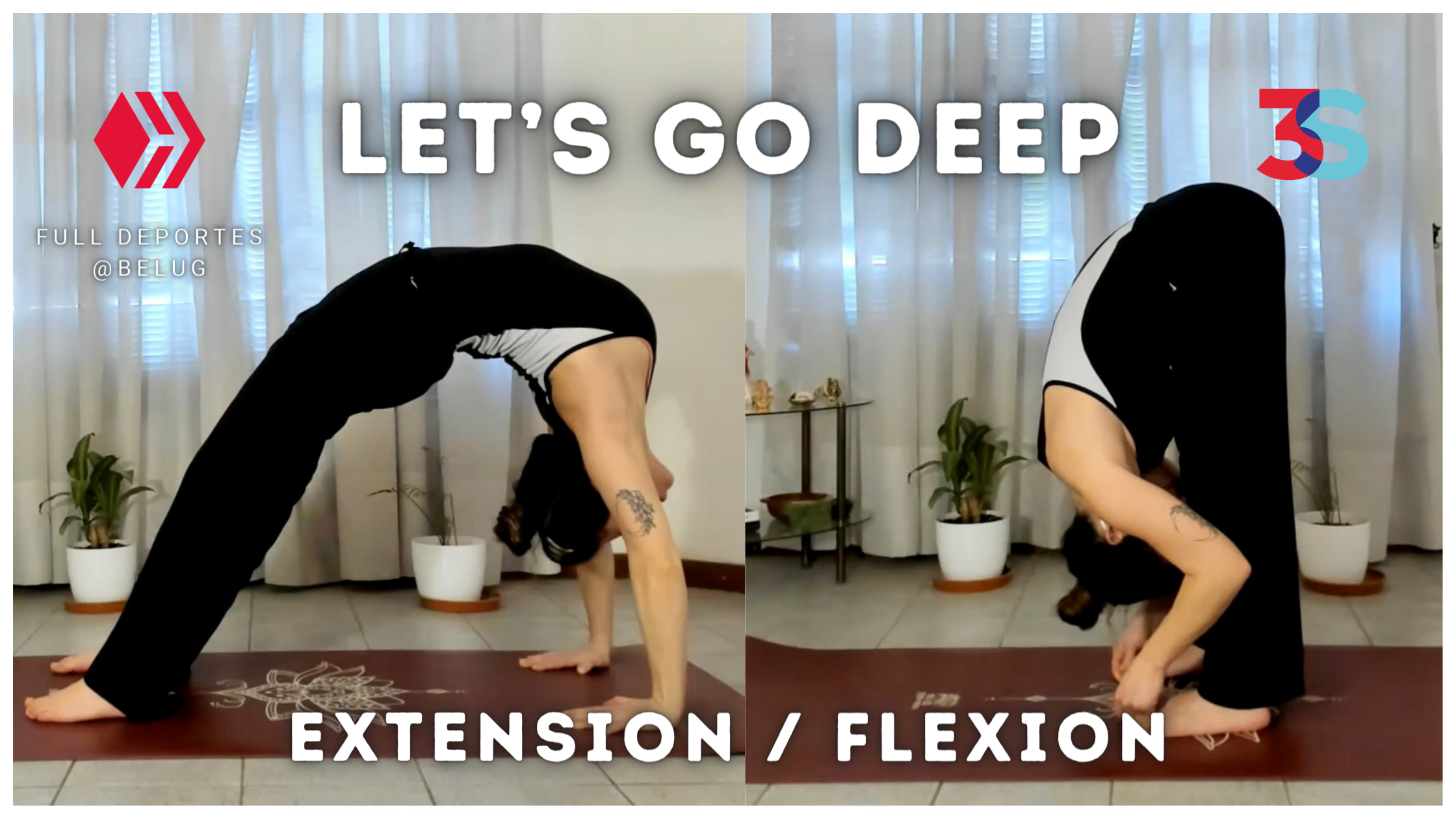
Español
Ashtanga Vinyasa Yoga para Práctica intensas de flexiones y extensiones
Hola mis queridos amigos de Hive y de Full Deportes, ¡espero que estén teniendo un maravilloso día! Vengo a compartirles lo que sería una parte de una secuencia de Ashtanga Vinyasa, y bastante modificada.
Les comento, una práctica de Ashtanga Vinyasa Yoga tiene una duración de alrededor de 1:30 horas a 2:00 hs, y consiste en una serie de posturas que jamás se modifican. Tenemos la 1ra serie, la 2da y la 3ra, pero para que un practicante pueda hacer la 2da serie, tiene que dominar por completo la primera.
Yo solamente he practicado la primera serie y es realmente excelente. Todas las posturas que están ahí, se realizan en otros tipos de Yoga como Vinyasa o Hatha, pero en una serie de Ashtanga, es necesario hacerlos a todos y en ese orden.
¿Cuál es el punto fundamental a tener en cuenta? Que cuando hablamos solo de Ashtanga Yoga, nos vamos al estilo bien tradicional, y cuando añadimos Vinyasa, empezamos a dejar entrar ciertos matices, acompañados del dinamismo que presenta el propio Vinyasa Yoga. Esto nos habilita a hacer ciertas modificaciones.
Es decir que si alguien va a una clase de Ashtanga, deberá realizar la primera serie paso a paso, a su ritmo, pero ese será su objetivo, y en Ashtanga Vinyasa notará esa misma rigurosidad, pero con un poco más de libertad en cuando a qué posturas hacer y cuándo.
English
Ashtanga Vinyasa Yoga for intense practice of push-ups and extensions
Hello my dear friends at Hive and Full Deportes, I hope you are having a wonderful day! I come to share with you what would be a part of an Ashtanga Vinyasa sequence, and quite modified.
Let me tell you, an Ashtanga Vinyasa Yoga practice has a duration of about 1:30 hours to 2:00 hours, and consists of a series of postures that are never modified. We have the 1st series, the 2nd and the 3rd, but for a practitioner to be able to do the 2nd series, he/she has to completely master the first one.
I have only practiced the first series and it is really excellent. All the postures that are there, are done in other types of Yoga like Vinyasa or Hatha, but in an Ashtanga series, it is necessary to do them all and in that order.
What is the fundamental point to keep in mind? That when we speak only of Ashtanga Yoga, we go to the very traditional style, and when we add Vinyasa, we begin to let in certain nuances, accompanied by the dynamism that Vinyasa Yoga itself presents. This enables us to make certain modifications.
That is to say that if someone goes to an Ashtanga class, he will have to perform the first series step by step, at his own pace, but that will be his goal, and in Ashtanga Vinyasa he will notice that same rigorousness, but with a little more freedom as to what postures to do and when.
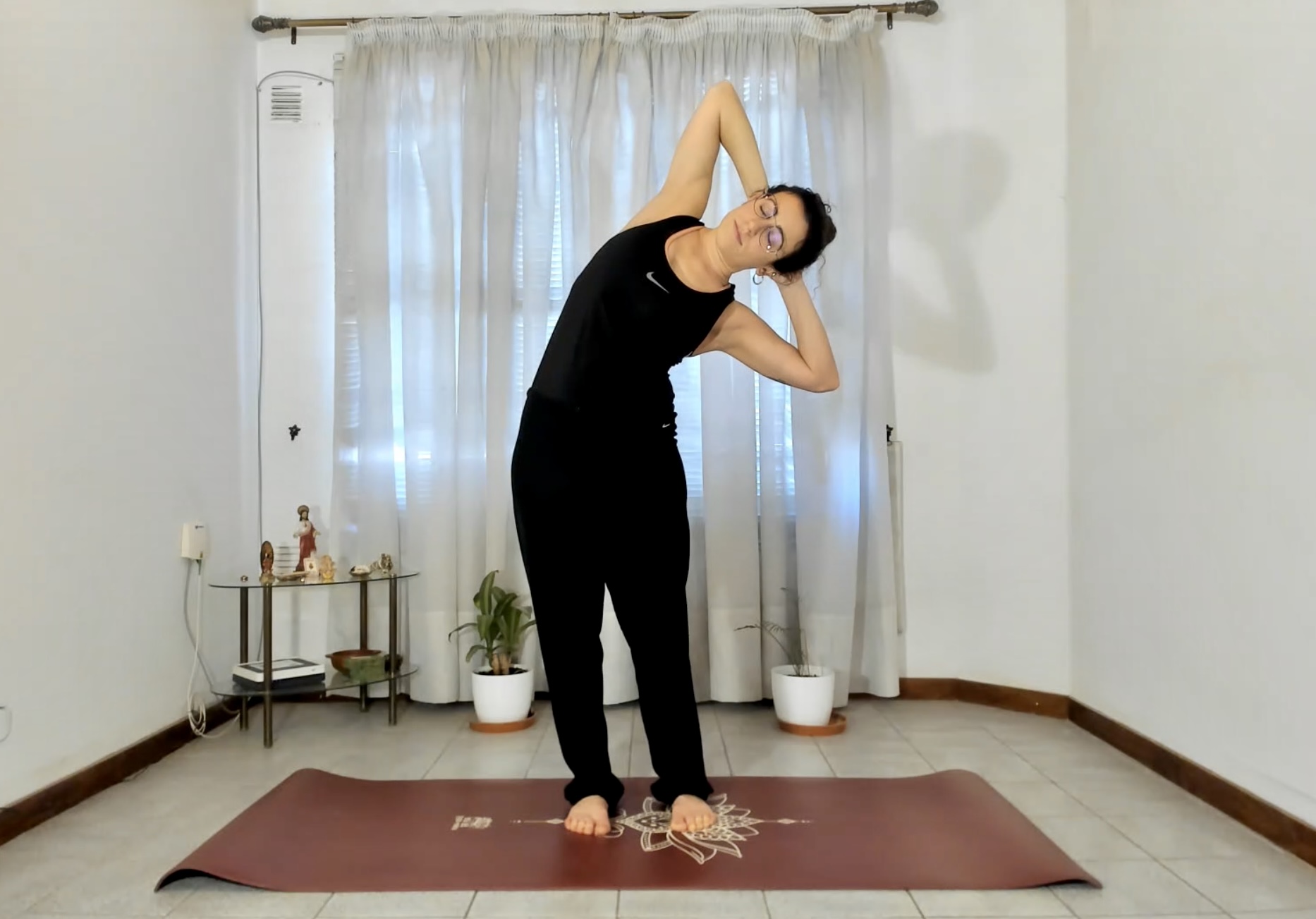

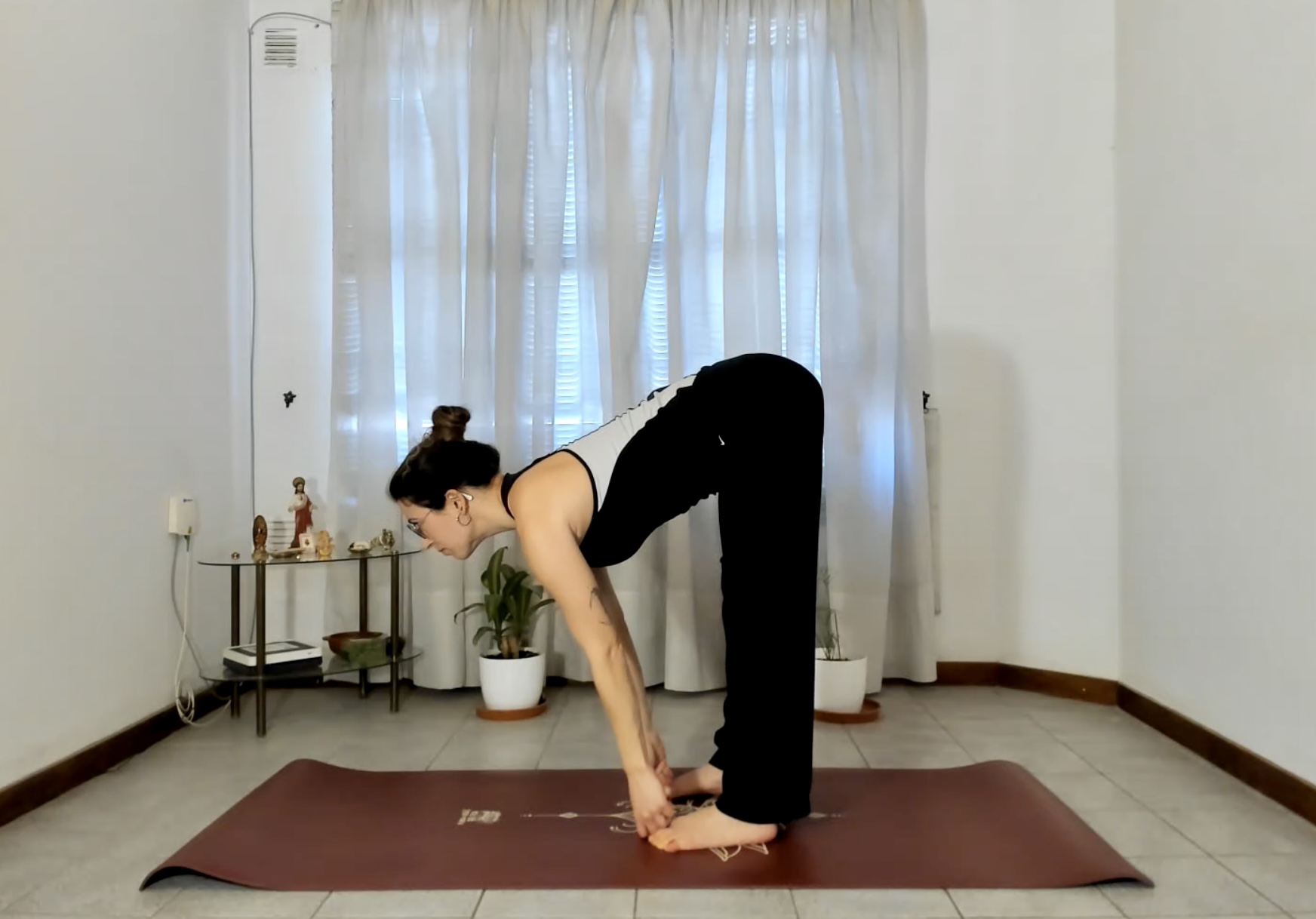
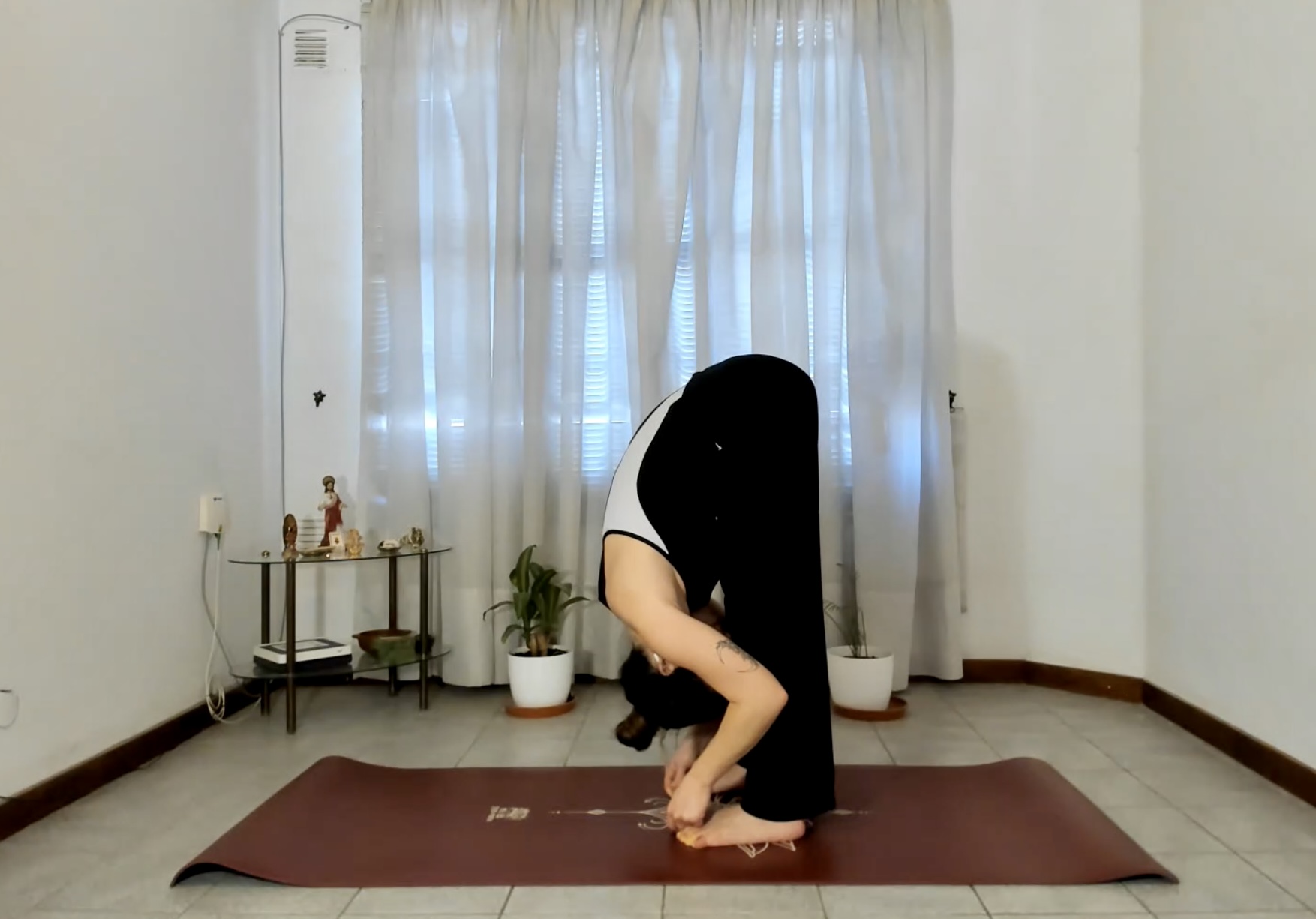
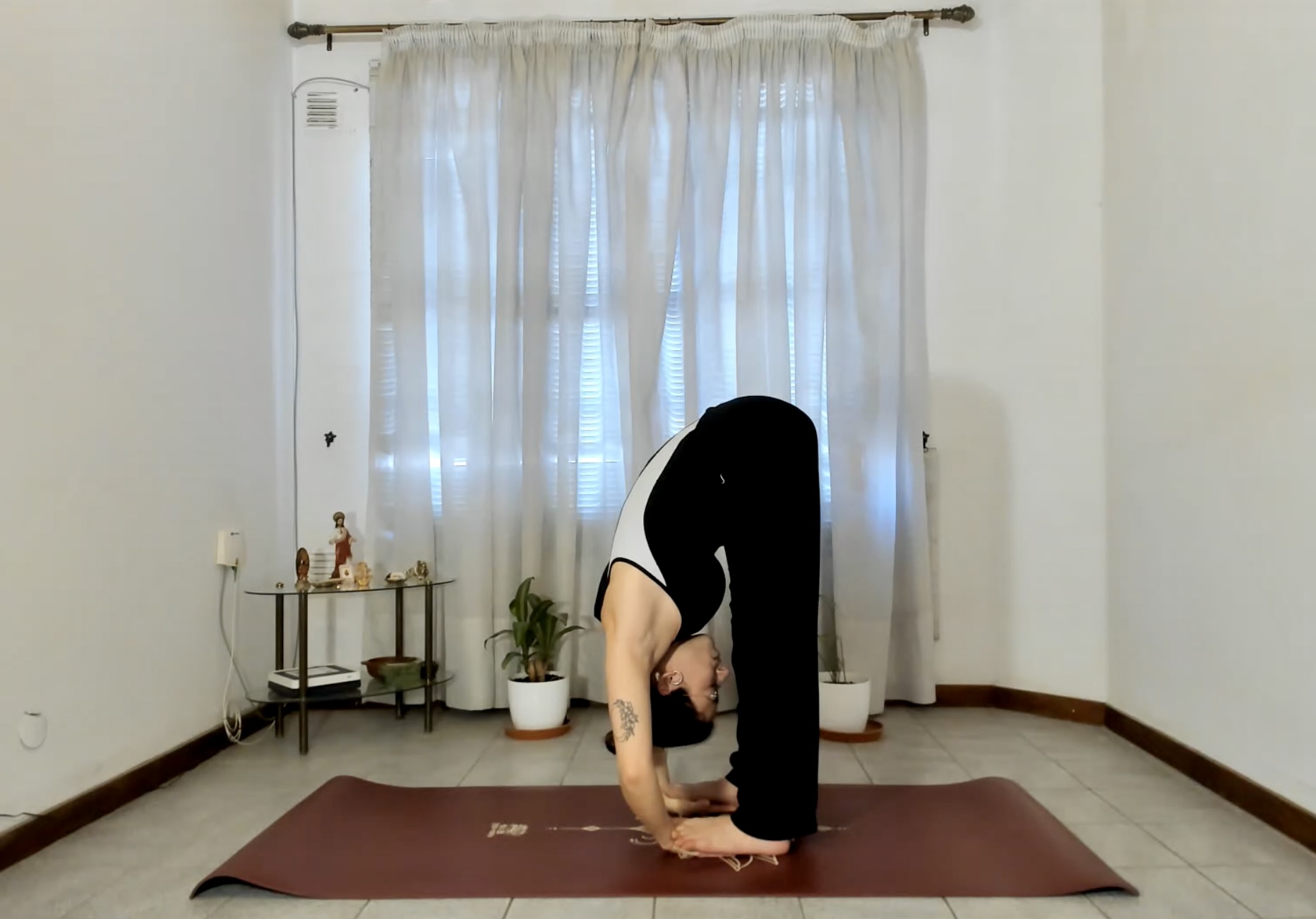
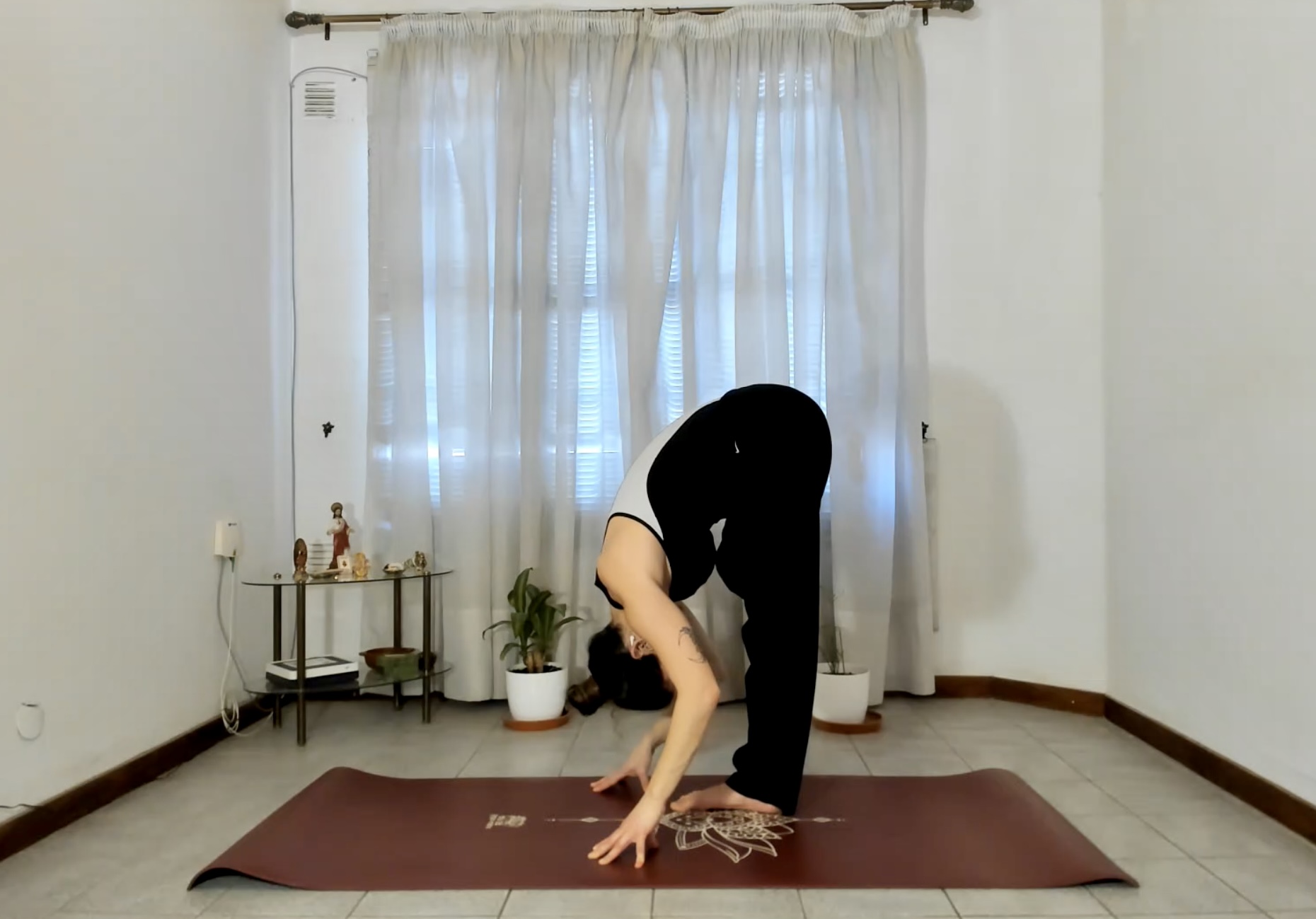
During my 2nd Yoga Instructorship, I was trained to teach Hatha Yoga and Ashtanga Yoga in its first series, and there I fell in love with Ashtanga but as a practitioner, I am much more the style of a teacher who observes the group and puts together the classes according to what I see that can make them better. I like the flow in the Yoga Mat and also the creativity when putting together a class.
However, Ashtanga seems to me excellent to improve my individual practice, so I always have the image of the series at hand to put into practice some postures that I do not always take into account, because they are more challenging, or simply go out of my mind when practicing or teaching.
I clarify that the video you will see is a bit of an abbreviation of the first series, with some postures standing and others from the floor. I also added some variations, which I usually apply in my practices.
The focus of my publication are intense push-ups and intense extensions, so I took Ashtanga for the warm-up and for the moment of execution of the postures in its most intense version.
Durante mi 2do instructorado de Yoga, me formaron para enseñar Hatha Yoga y Ashtanga Yoga en su primera serie, y ahí me enamoré de Ashtanga pero como practicante, pues soy mucho más el estilo de profesora que va observando al grupo y armando las clases de acuerdo a lo que veo que les puede hacer mejor. Me gusta más el fluir en el Yoga Mat y también en la creatividad al momento de armar una clase.
Sin embargo, el Ashtanga me parece excelente para mejorar mi práctica individual, por lo que siempre tengo a mano la imagen de la serie para poner en práctica algunas posturas que no siempre tengo en cuenta, pues o son más desafiantes, o sencillamente se van de mi mente al momento de practicar o enseñar.
Aclaro que el video que verán es un poco una abreviatura de la primera serie, con algunas posturas de pie y otras desde el piso. Además agregué algunas variaciones, que suelo aplicar en mis prácticas.
El foco de mi publicación son las flexiones intensas y las extensiones intensas, por ello tomé al Ashtanga para el calentamiento y para el momento de ejecución de las posturas en su versión más intensa.
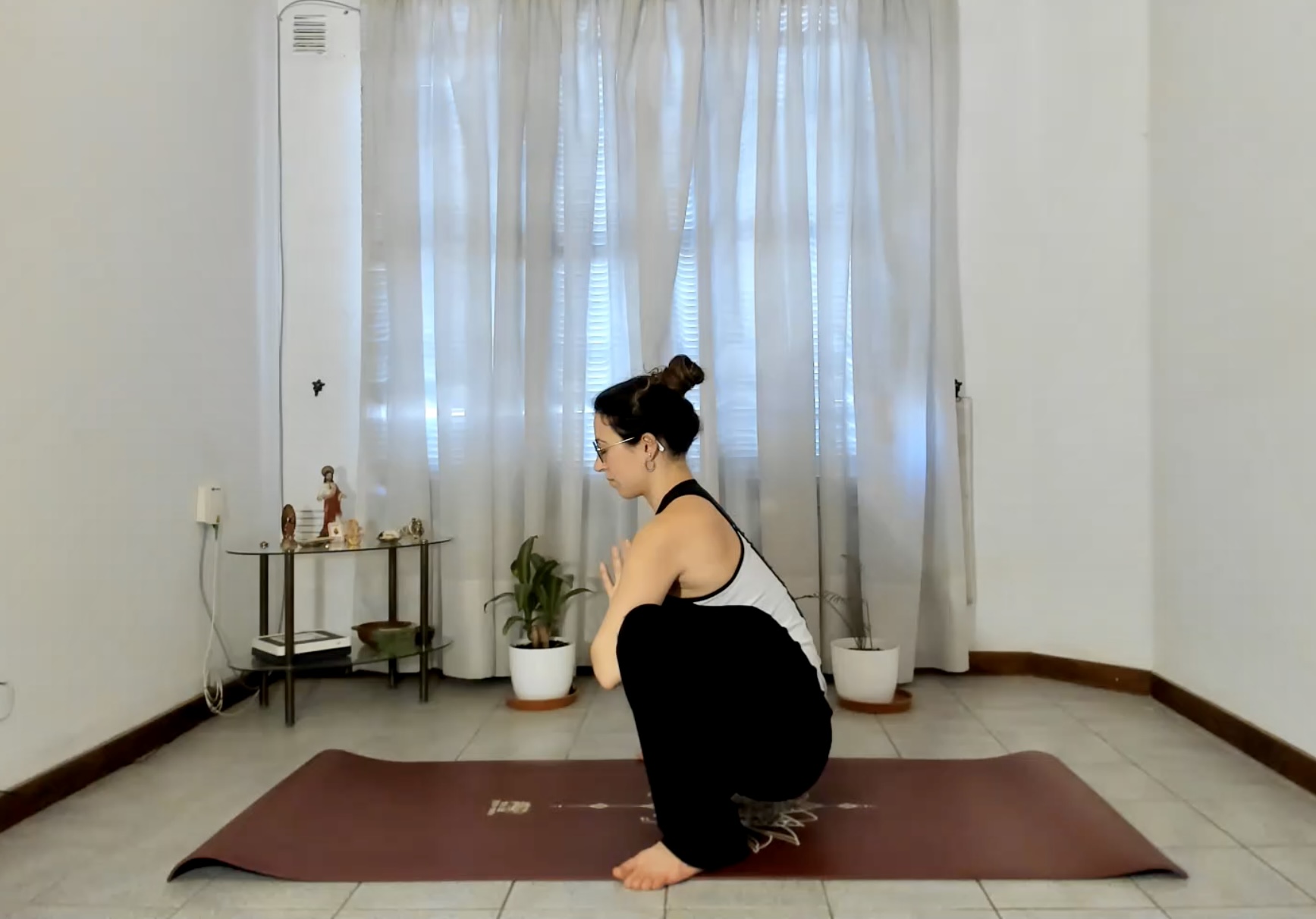
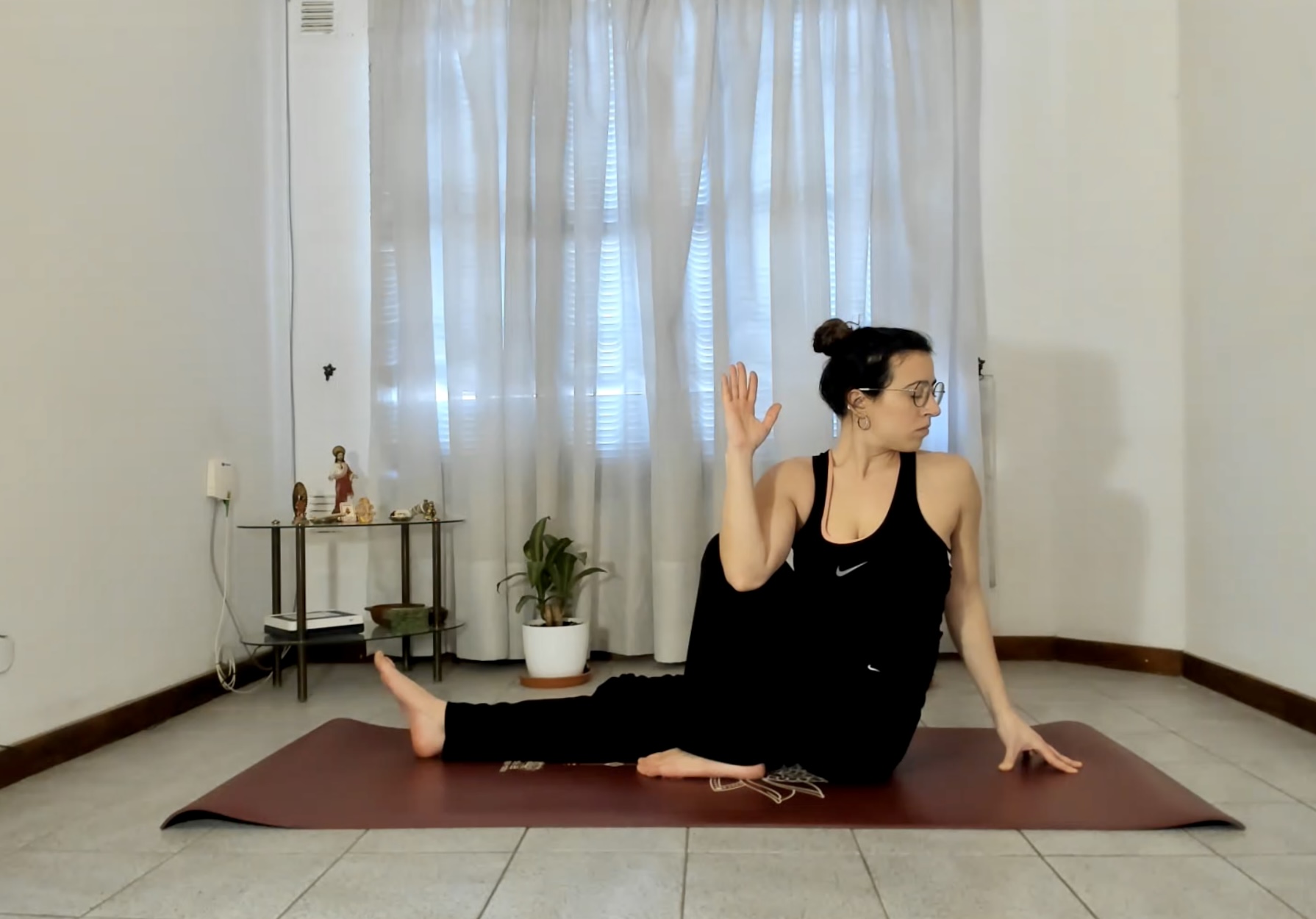
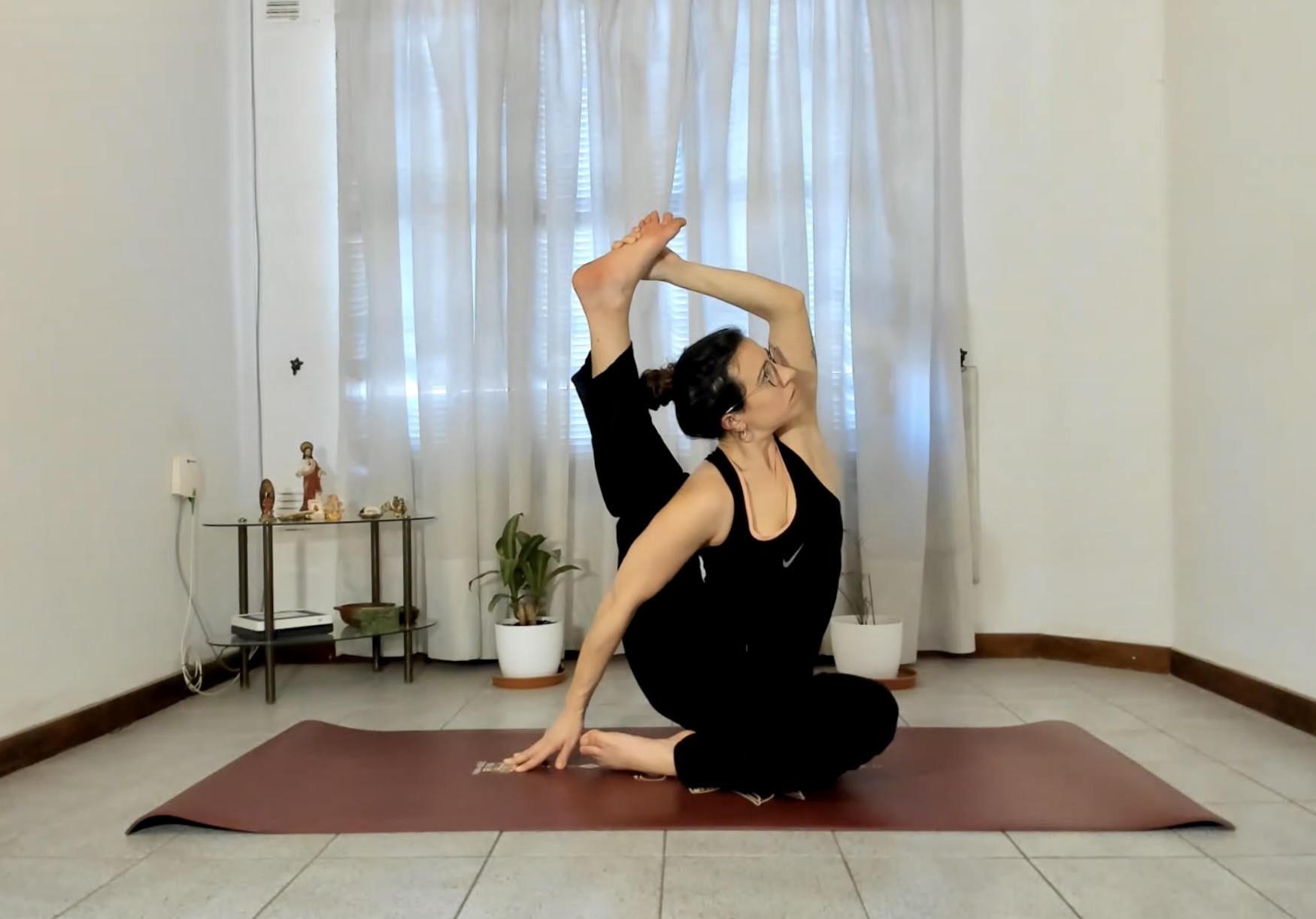
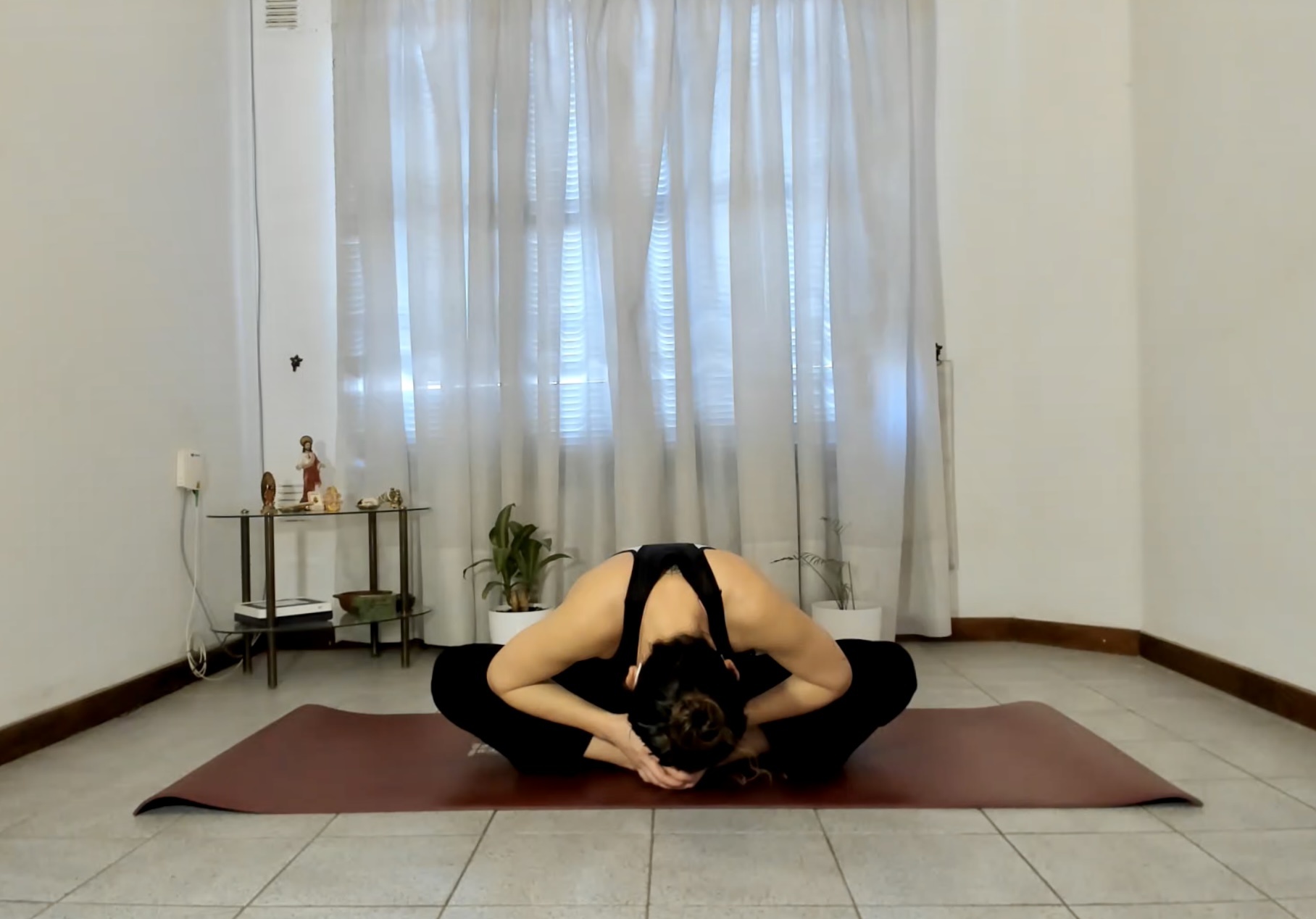

¡Atención!
La última vez compartí con ustedes una secuencia que podía realizar quien quisiera, pues no había riesgo alguno de lesión. Esta vez ocurre lo contrario.
ES FUNDAMENTAL QUE PARA REALIZAR ESTAS POSTURAS CUENTEN CON UN PROFESOR AL LADO O TENGAN ALGO DE PRÁCTICA PREVIA, en especial si nos detenemos en la postura Urdhva Dhanurasana, que muchas personas intentan hacer “por intentar”, pero implica una activación y extensión muy profunda de la columna lumbar y realmente uno puede lesionarse (hay que saber cómo colocar los pies, las rodillas, glúteos y manos para sostener adecuadamente la postura).
Attention!
Last time I shared with you a sequence that could be performed by anyone, as there was no risk of injury. This time the opposite is true.
IT IS ESSENTIAL THAT TO PERFORM THESE POSTURES YOU HAVE A TEACHER BY YOUR SIDE OR HAVE SOME PRIOR PRACTICE, especially if we stop at the posture Urdhva Dhanurasana, which many people try to do "just to try", but it involves a very deep activation and extension of the lumbar spine and you can really injure yourself (you have to know how to place your feet, knees, buttocks and hands to properly hold the posture).
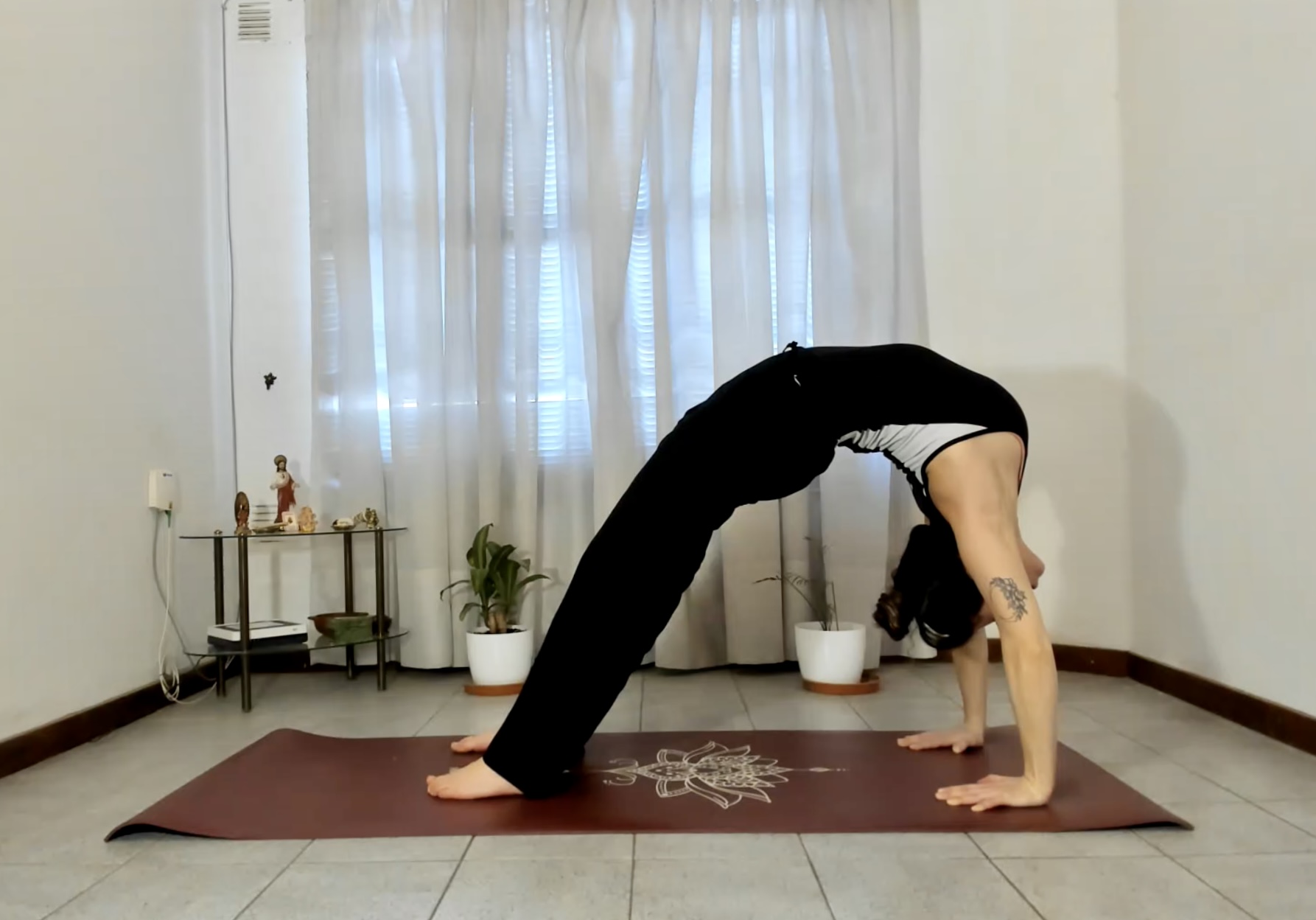
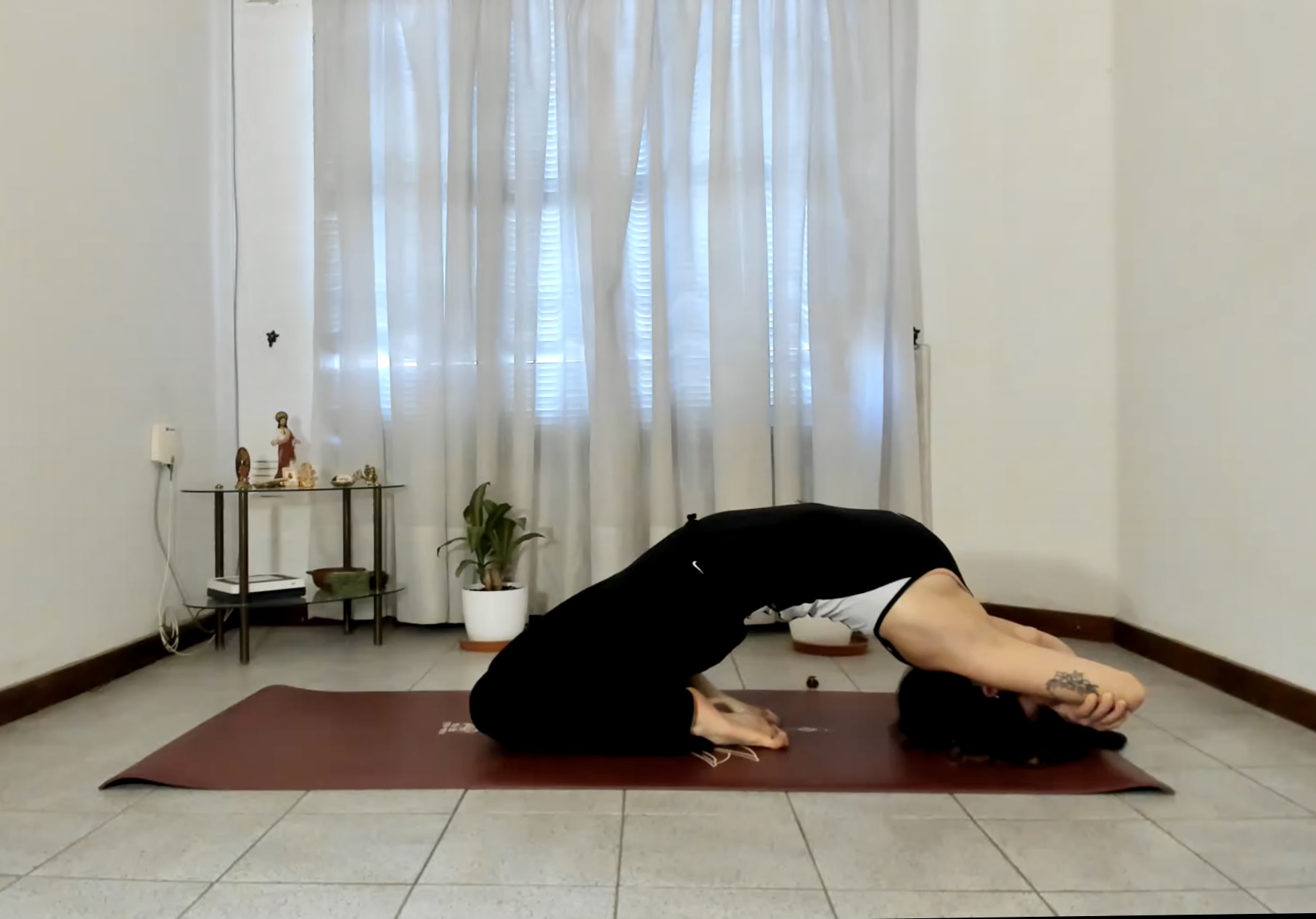


Benefits of intense push-ups and extensions
For the benefits I will focus on these postures and not specifically on Ashtanga, because as I mentioned, I only used it as a resource to do these postures in practice.
Urdhva Dhanurasana
- Intense chest opening
- Activation and balance of Heart Chakra (related to love, self, others, creation).
- Activation and balance of Throat Chakra (communication, silences)
- Flexibility between the vertebrae
- Active work of the buttocks
- Stretching of the abdominals
- Stretching of the pectorals
- Activation of deltoids
- Feeling of security
Performing this challenging posture can lead to a state of satisfaction and fulfillment, derived from the activity of the Heart Chakra, but at the same time, being a complex posture, it generates in the practitioner a recognition of his ability to achieve an accomplishment and overcome a challenge.
To reassure you, to this day, there are times when I do not feel that my body is ready to do this posture, so do not think that in each of my practices I do it. In fact, at the beginning I was "afraid" to do it. Yes, just as you read. I felt like I was going to fall, that I wouldn't be able to hold myself, and it took me about a year to develop the confidence to achieve the asana. So... patience and practice, hehe.
Padangustasana, Pada Hastasana, Paschimottanasana
These are "safer" to perform because the "natural" thing to do is to bring the body forward. Flexion is more organic and frequent in the human being and even numerous daily tasks demand that we flex the hip (that we bring it forward) to: lift something off the floor, to simply sit down, etc.
Hence the importance of doing extensions (arching the spine backwards), because in this way we achieve physical and energetic balance.
- Activation and balance of Sexual Chakra
- Stretching of the posterior
- Stretching of the sciatic (also release of tensions in the area).
- Balance activation
- Neck relaxation
- Relaxation of the nervous system
- Feeling of finding oneself
Beneficios de las flexiones y extensiones intensas
Para los beneficios me enfocaré en estas posturas y no específicamente en el Ashtanga, pues como les comentaba, solo lo utilicé como recurso para hacer estas posturas en la práctica.
Urdhva Dhanurasana
- Apertura de pecho intensa
- Activación y balance de Chakra Corazón (relacionado con el amor, propio, hacia - los demás, hacia la creación)
Activación y balance de Chakra Garganta (comunicación, silencios) - Flexibilidad entre las vértebras
- Trabajo activo de glúteos
- Estiramiento de abdominales
- Estiramiento de pectorales
- Activación de deltoides
- Sensación de seguridad
Realizar esta desafiante postura puede conducir a un estado de satisfacción y plenitud, derivada de la actividad de Chakra Corazón, pero al mismo tiempo al ser una postura compleja, genera en el practicante un reconocimiento de su capacidad de alcanzar un logro y superar un reto.
Para que se queden tranquilos, hasta el día de hoy, hay momentos en los que no me siento con el cuerpo preparado para hacer esta postura, por lo que no crean que en cada una de mis prácticas la realizo. De hecho, al principio me daba “miedo” hacerla. Sí, así como leen. Sentía que me iba a caer, que no podría sostenerme, y me llevó alrededor de un año desarrollar la confianza para lograr el asana. Así que… paciencia y práctica, jeje.
Padangustasana, Pada Hastasana, Paschimottanasana
Estas son más “seguras” de ejecutar porque lo “natural” es que llevemos el cuerpo hacia adelante. La flexión es más orgánica y frecuente en el ser humano e incluso numerosas tareas cotidianas demandan que flexionemos la cadera (que la llevemos hacia adelante) para: levantar algo del piso, para simplemente sentarnos, etc.
De aquí la importancia de hacer extensiones (arquear la columna hacia atrás), pues así alcanzamos el equilibrio físico y energético.
- Activación y balance de Chakra Sexual
- Estiramiento de posteriores
- Estiramiento de ciático (también liberación de tensiones en la zona
- Activación del equilibrio
- Relajación de cuello
- Relajación del sistema nervioso
- Sensación de encuentro con uno mismo
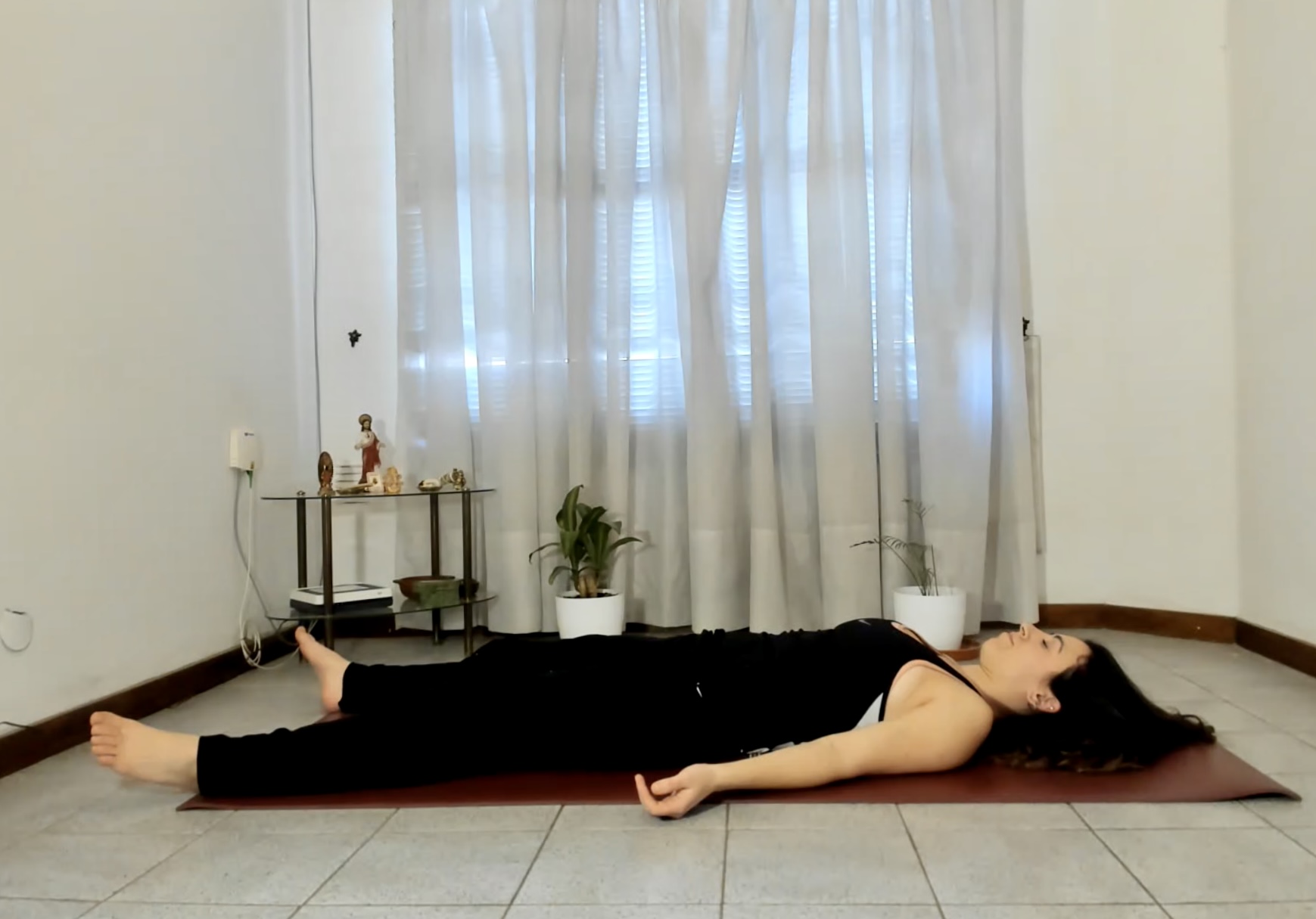
Espero que hayan disfrutado del post y del video y recuerden practicar y asesorarse antes de realizar posturas desafiantes, en especial si aún no las conocen en un contexto seguro de clase.
Este video y post son solo con la intención de compartir una práctica y no constituye una instancia de enseñanza de Yoga para la ejecución de asanas, sino más bien ofrezco la teoría con la demostración para quienes estén interesados.
Les deseo un bellísimo día 😊
I hope you enjoyed the post and video and remember to practice and get advice before performing challenging postures, especially if you are not yet familiar with them in a safe classroom context.
This video and post are only intended to share a practice and does not constitute an instance of teaching Yoga for the performance of asanas, but rather I offer the theory with the demonstration for those who are interested.
I wish you all a beautiful day 😊.

Espero que les guste!!
Que sigan hermoso este día y muchas gracias por estar aquí!
Con cariño,
I hope you like it!
I send you love and a big hug and thanks a lot for being here!
With love,
Datos de edición
Dispositivo: Logitech BRIO
Banner: Canva
Aplicación de edición: InShot (versión de pago)
Traducción: DeepL
Música (provided by InShot): Foxistance - DaFox
Link
Edition data
Device: Logitech BRIO
Banner: Canva
App for video edition: InShot (Paid version)
Translation: DeepL
Music (provided by InShot): Foxistance - DaFox
Link


Tags :
Their limit for today is $0!
More Videos
@threespeak: 0.9459
@steemed-proxy: 0.9451
@rocky1: 0.7536
@spectrumecons: 0.4389
@curie: 0.4008
@captainhive: 0.1644
@stayoutoftherz: 0.1253
@smartsteem: 0.1248
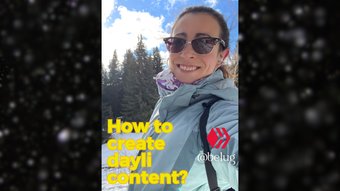


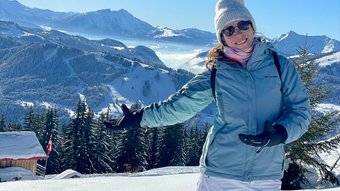


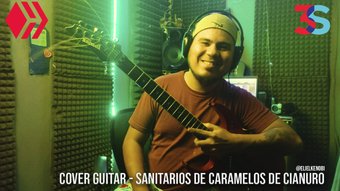

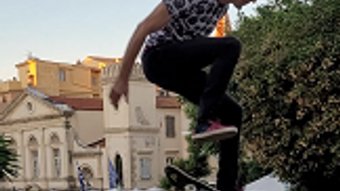
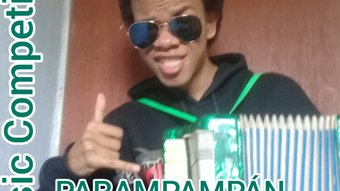
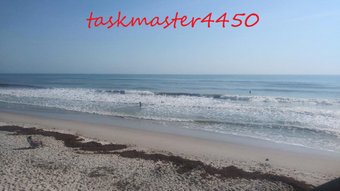


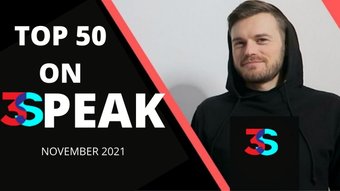



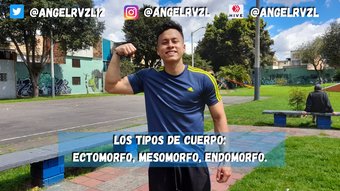




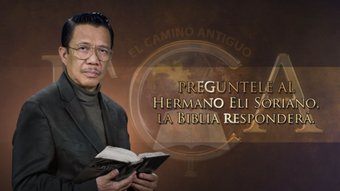


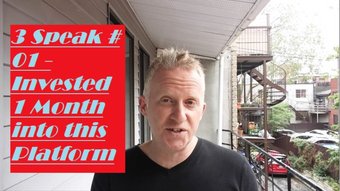


Comments:
Reply:
To comment on this video please connect a HIVE account to your profile: Connect HIVE Account